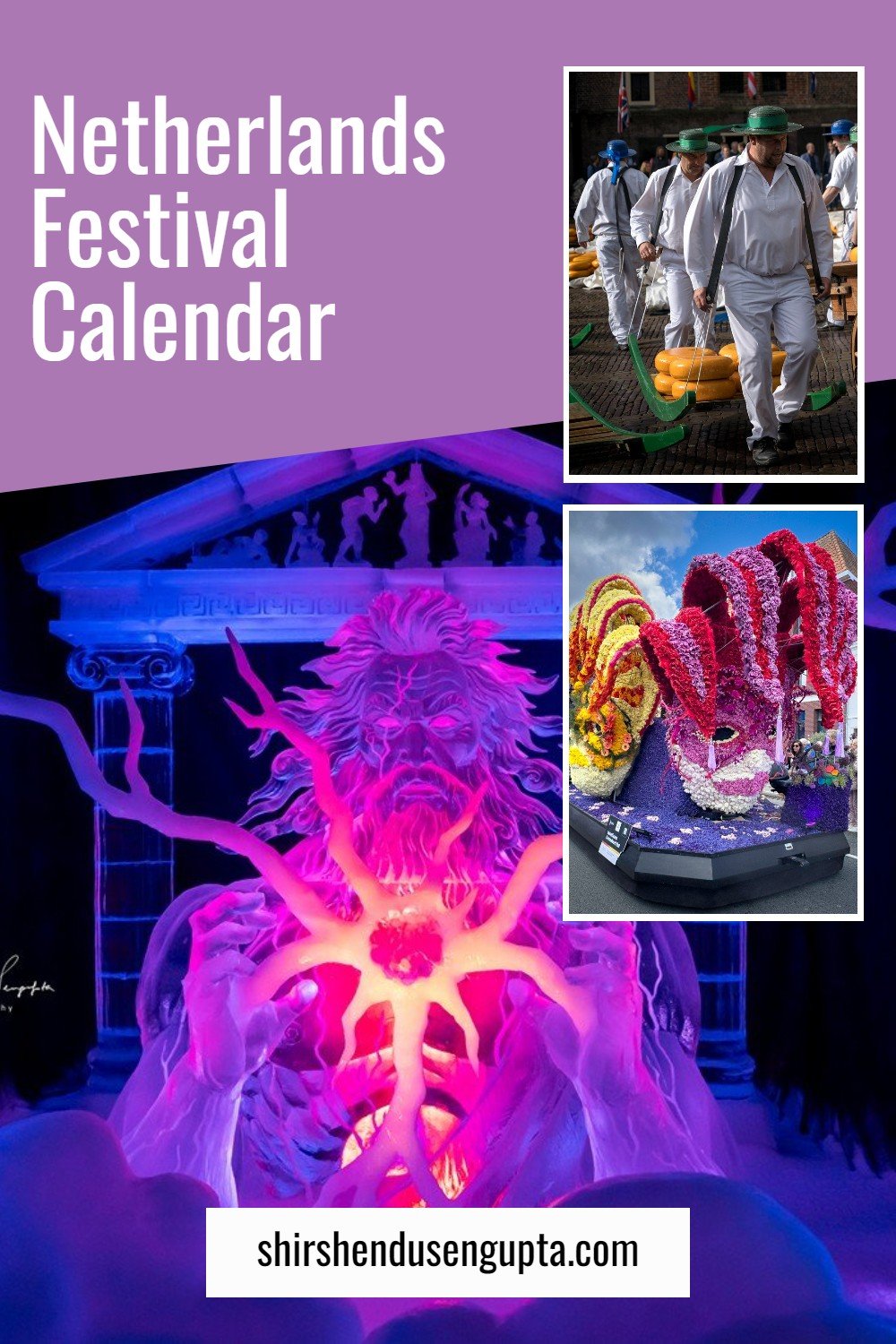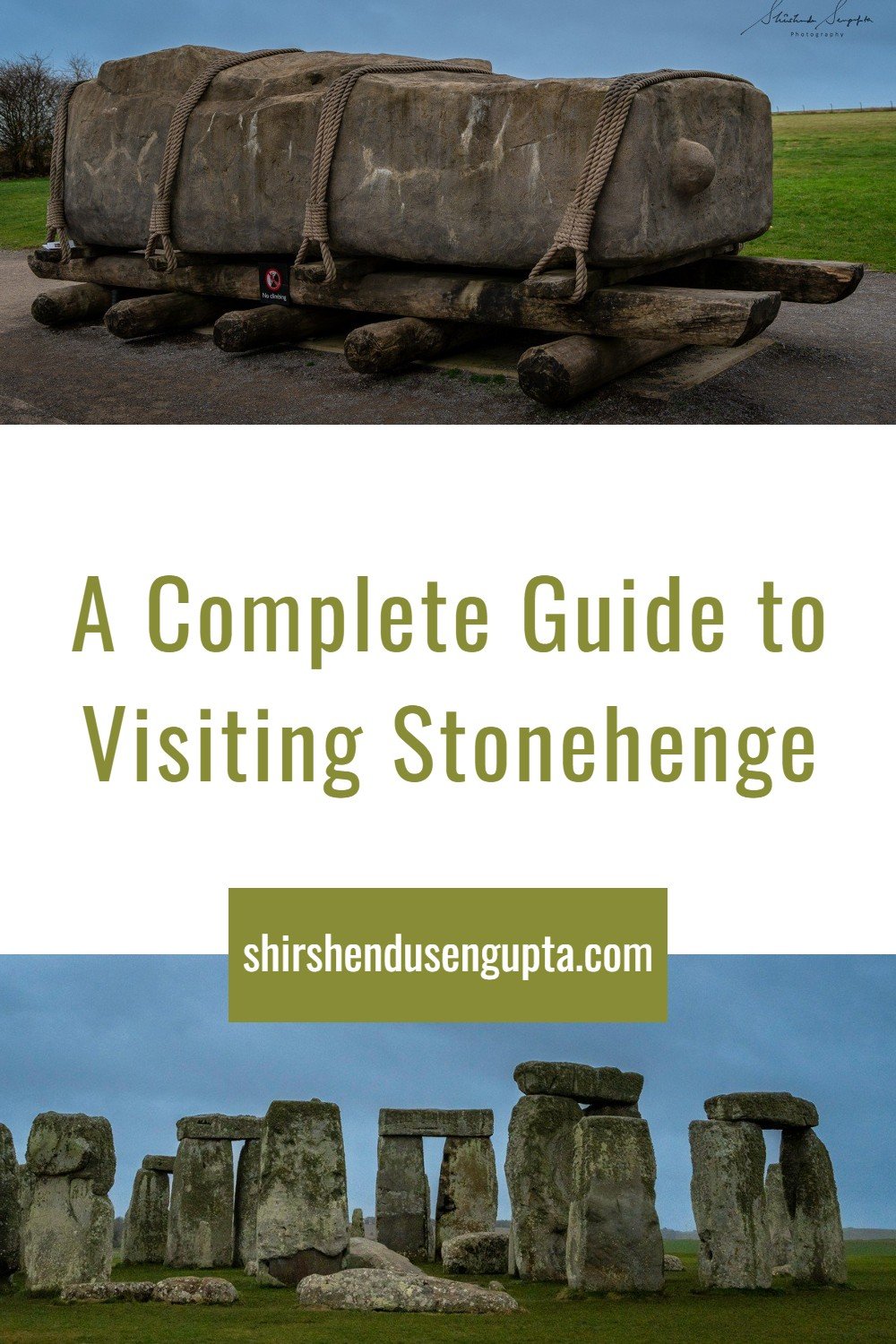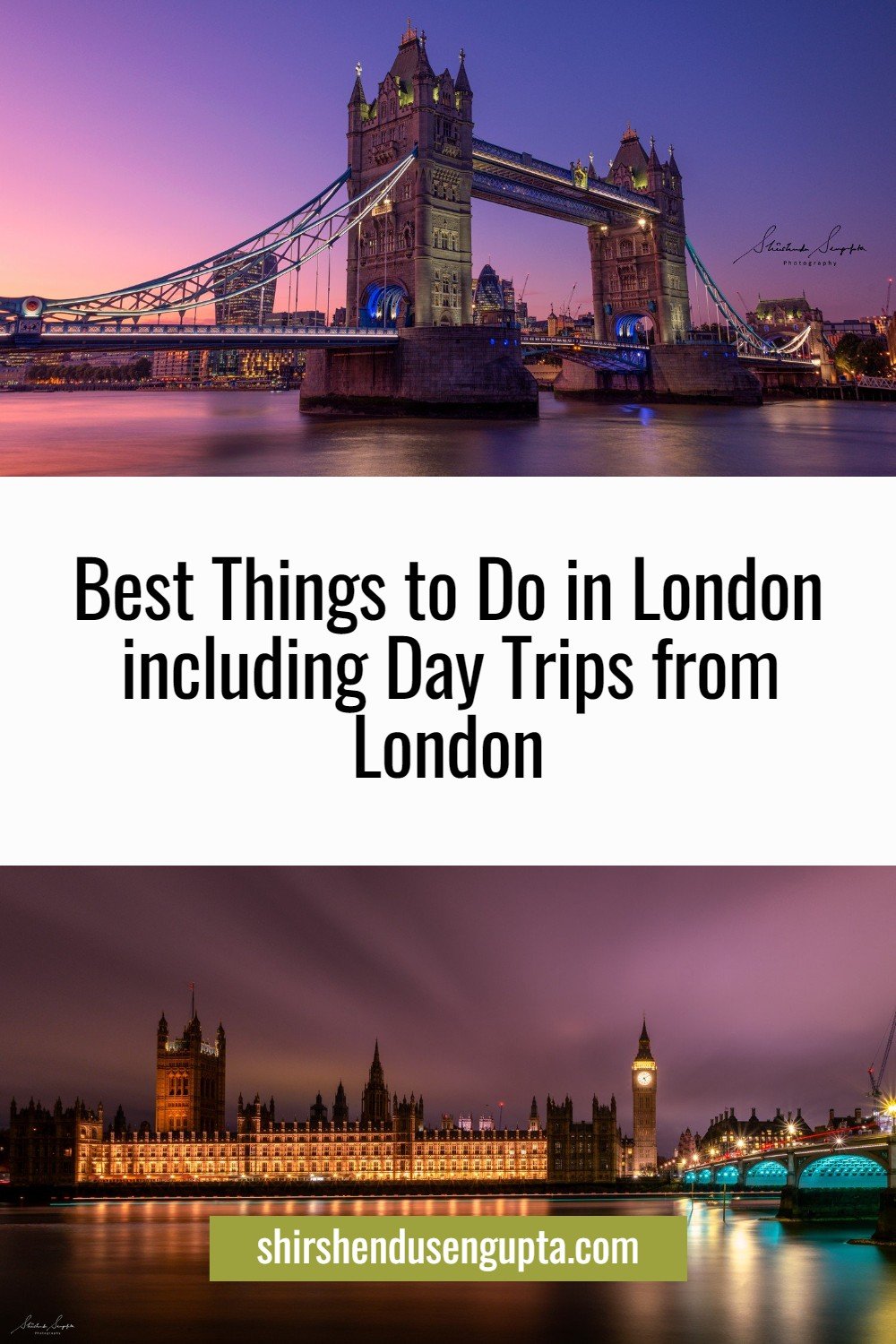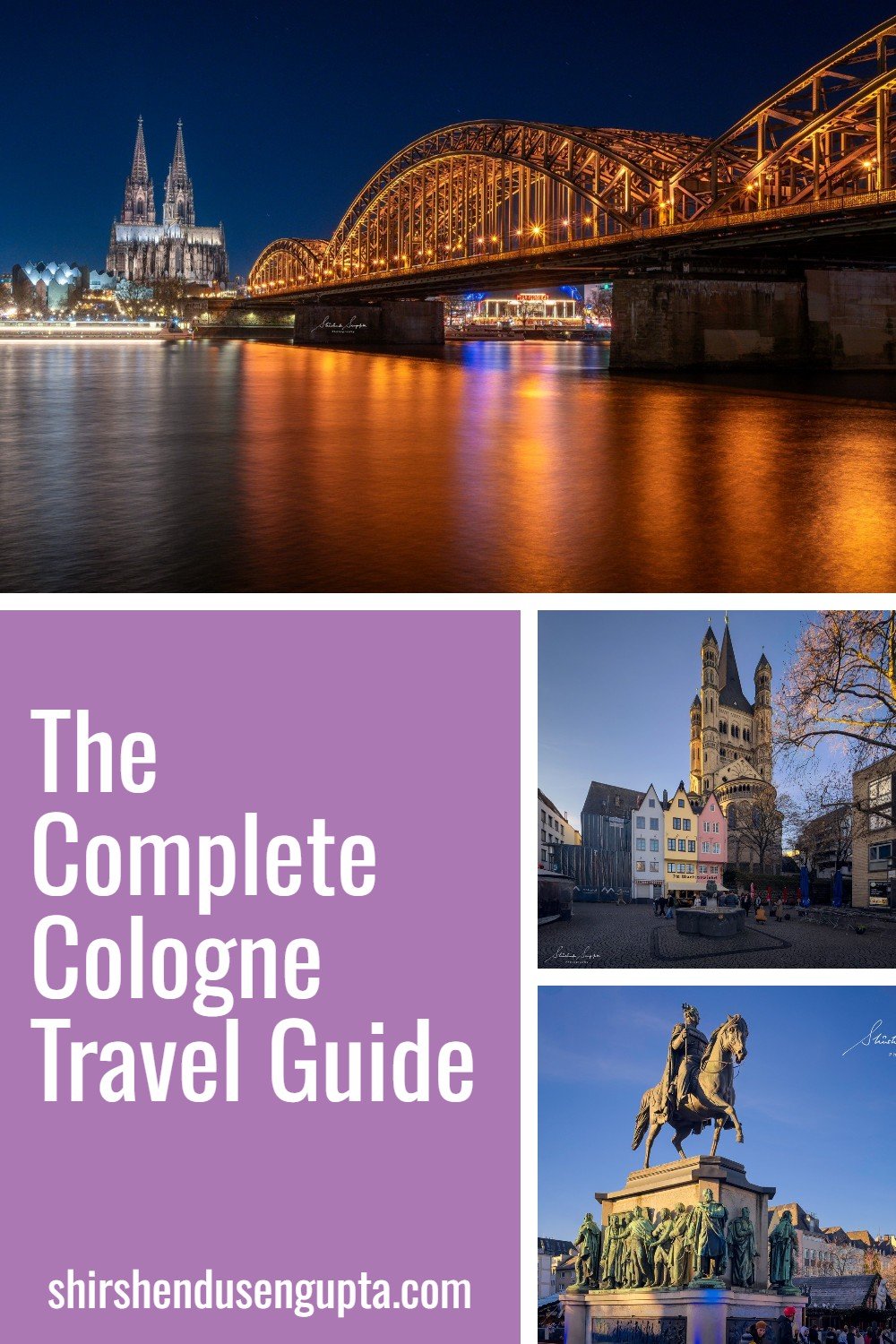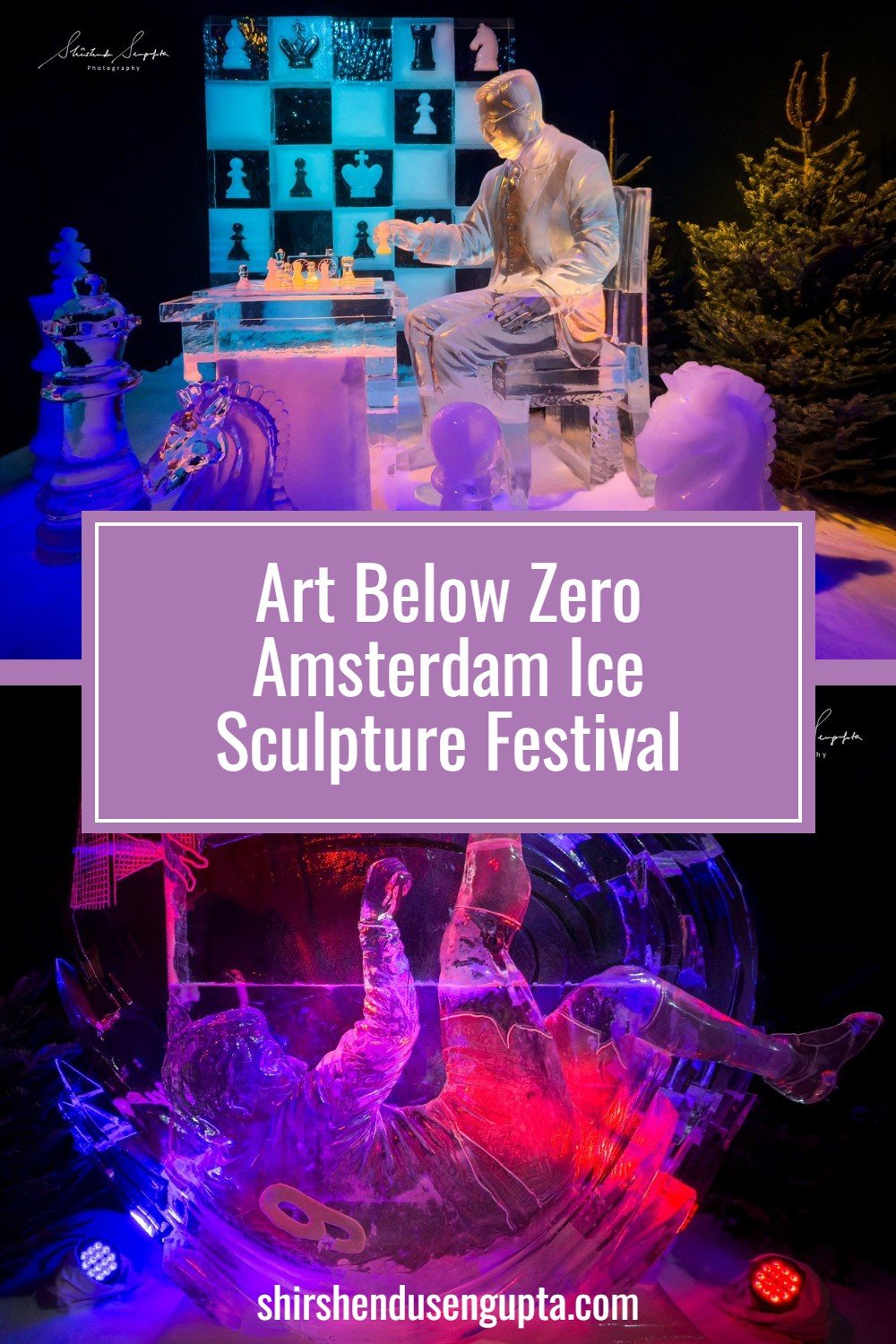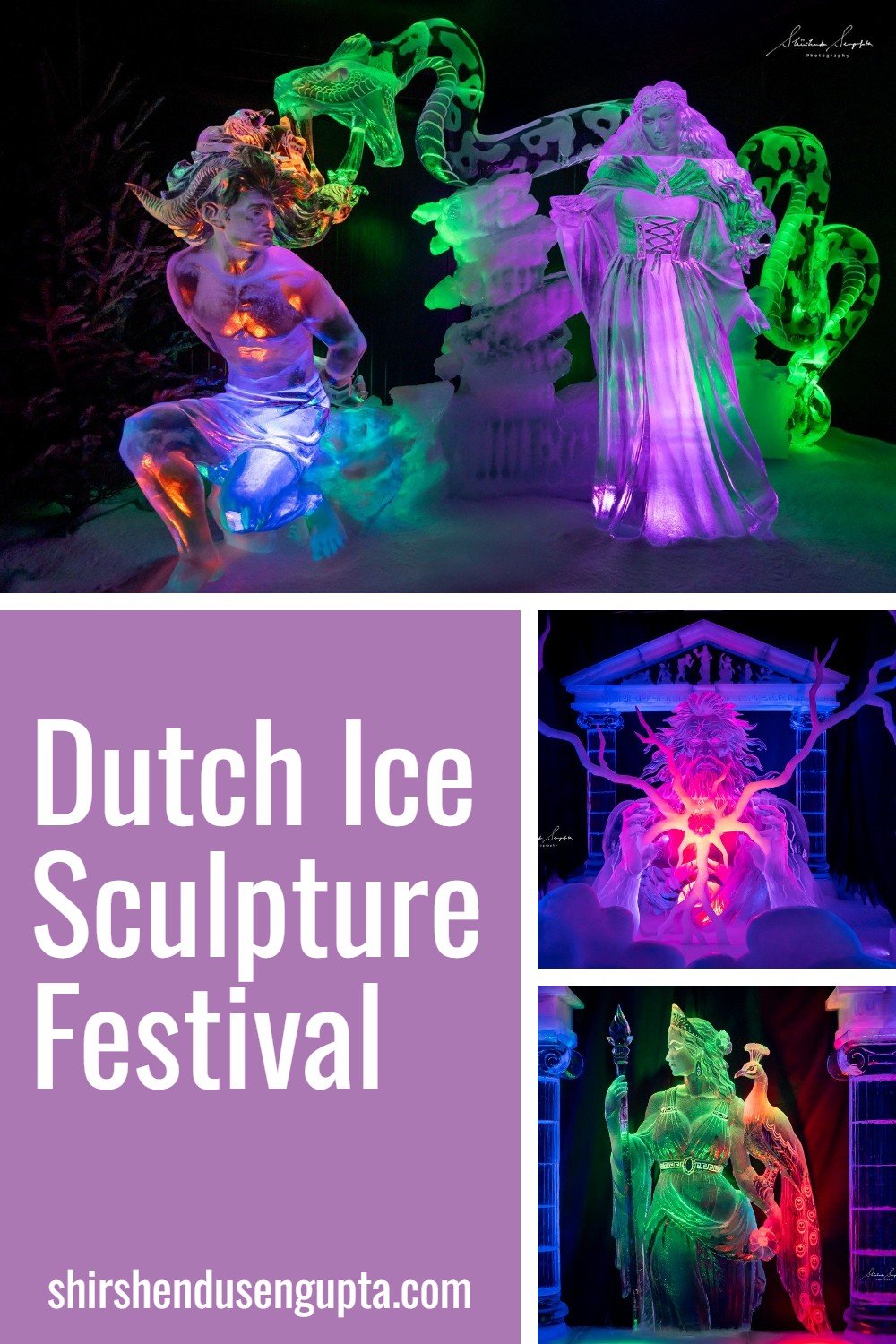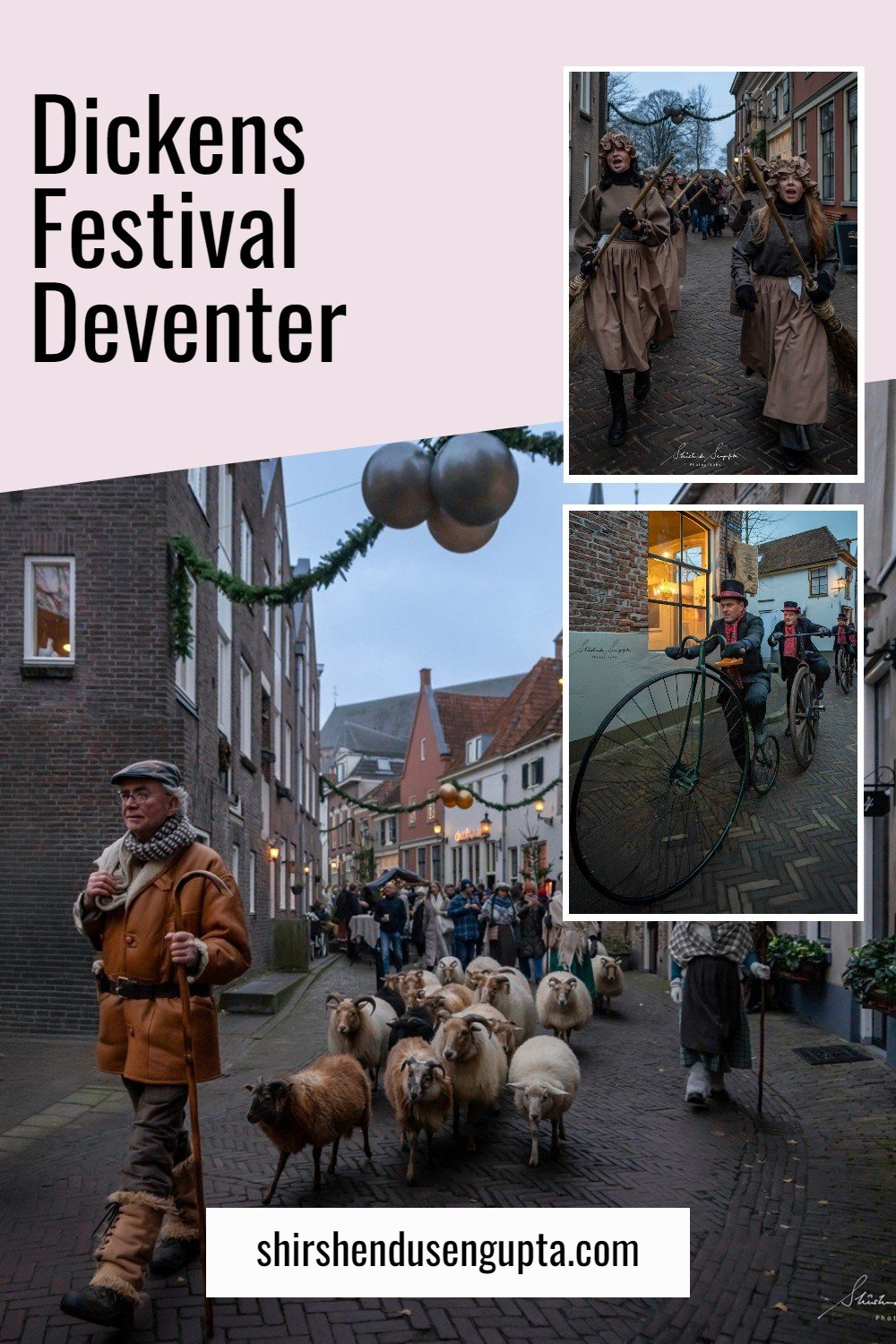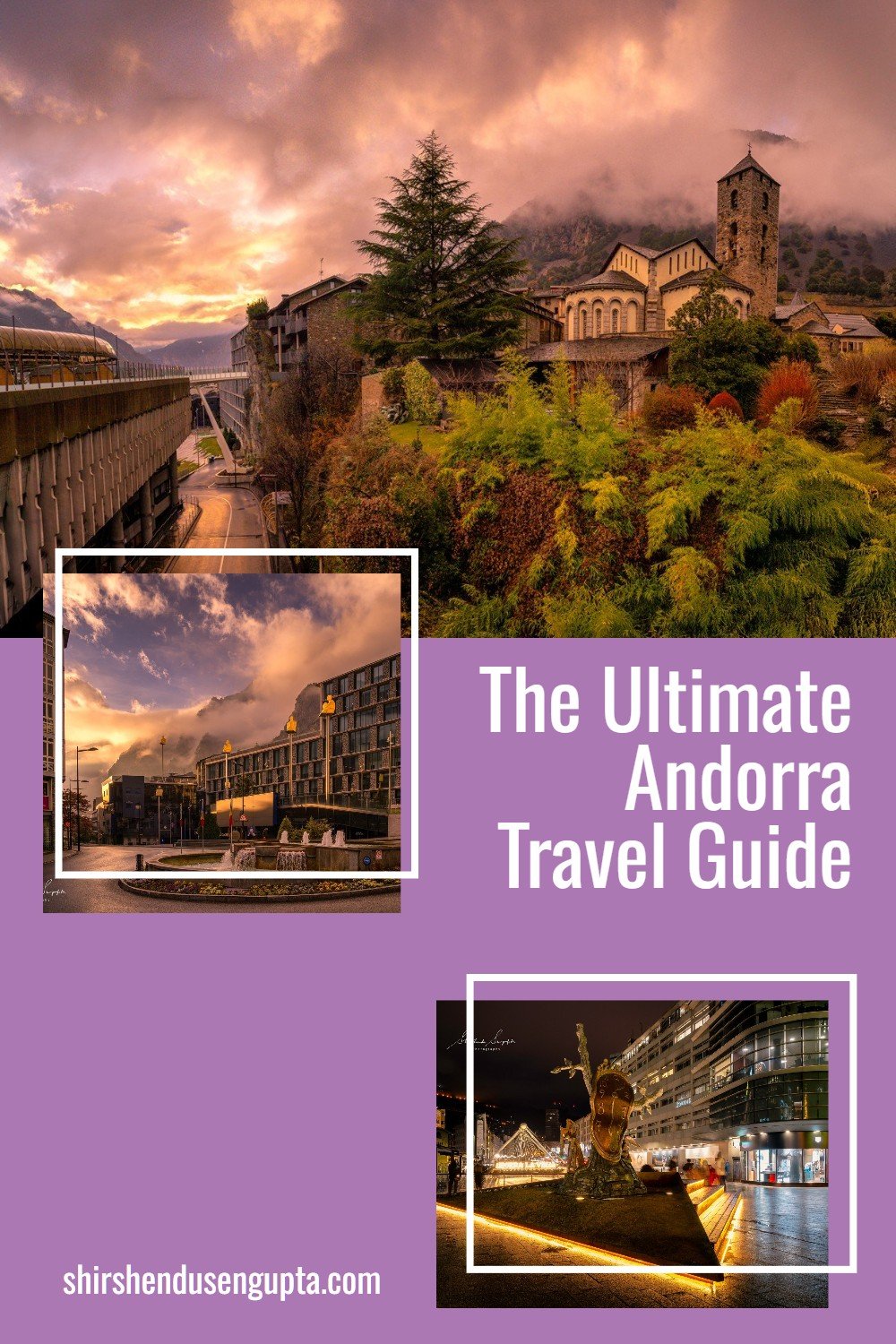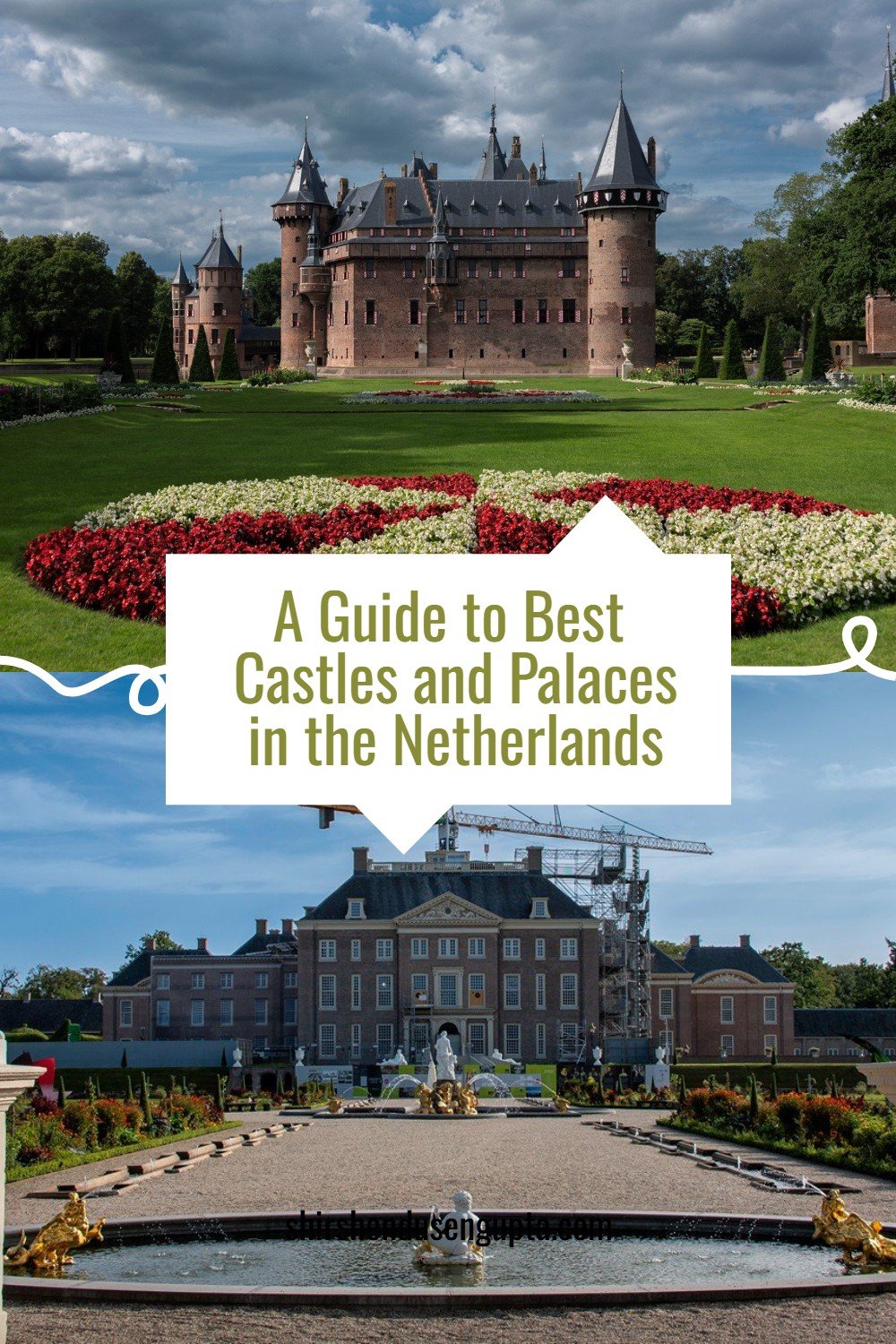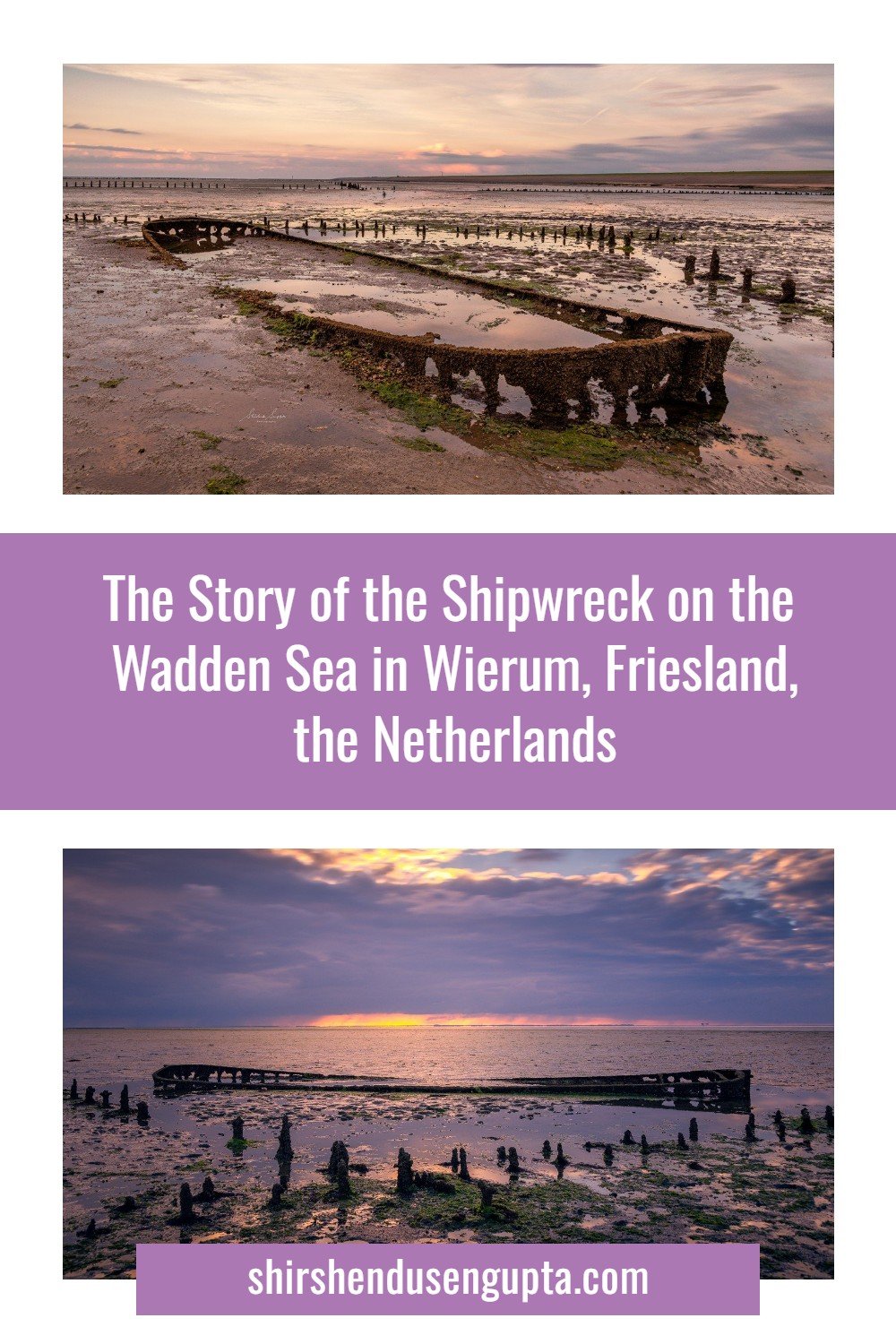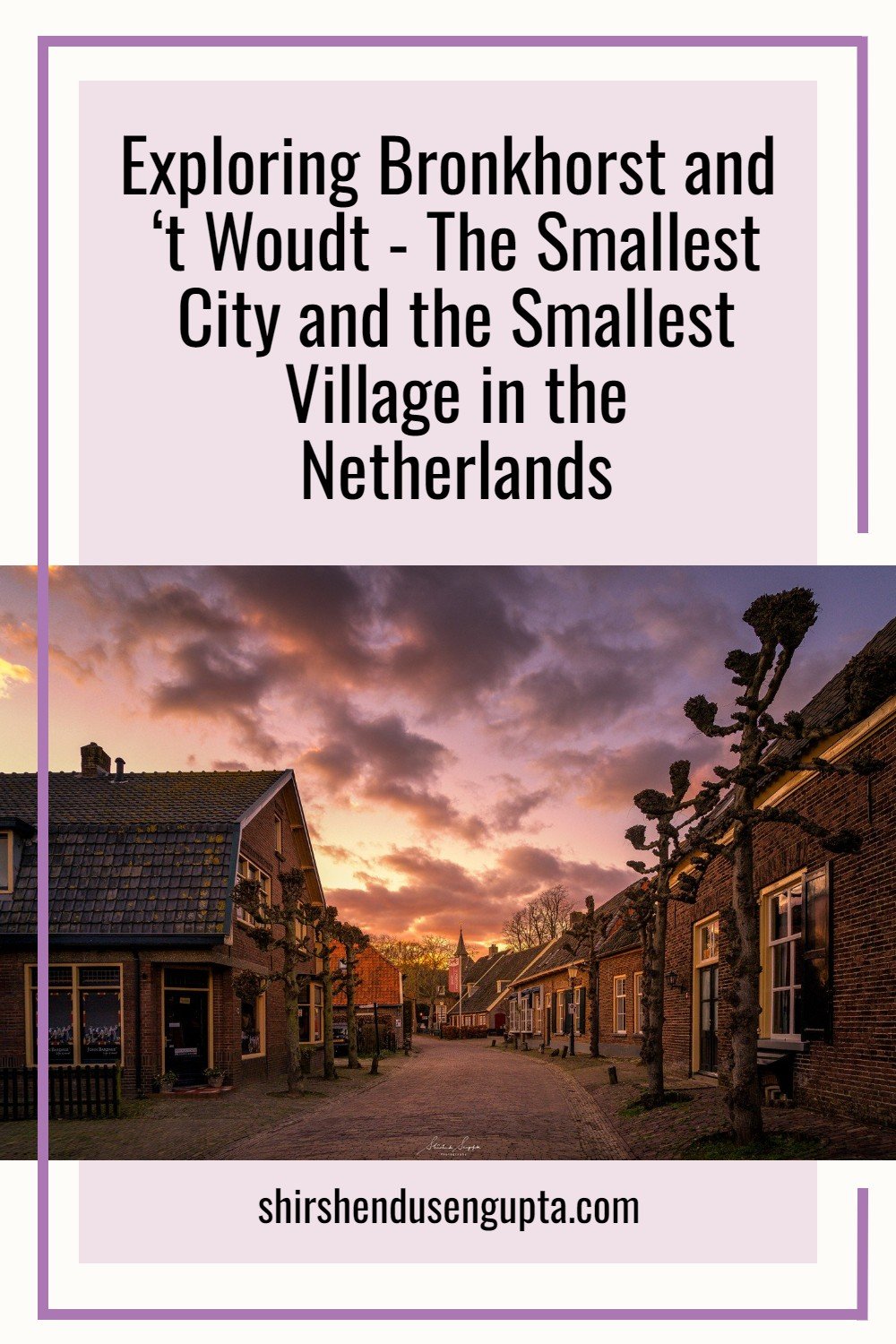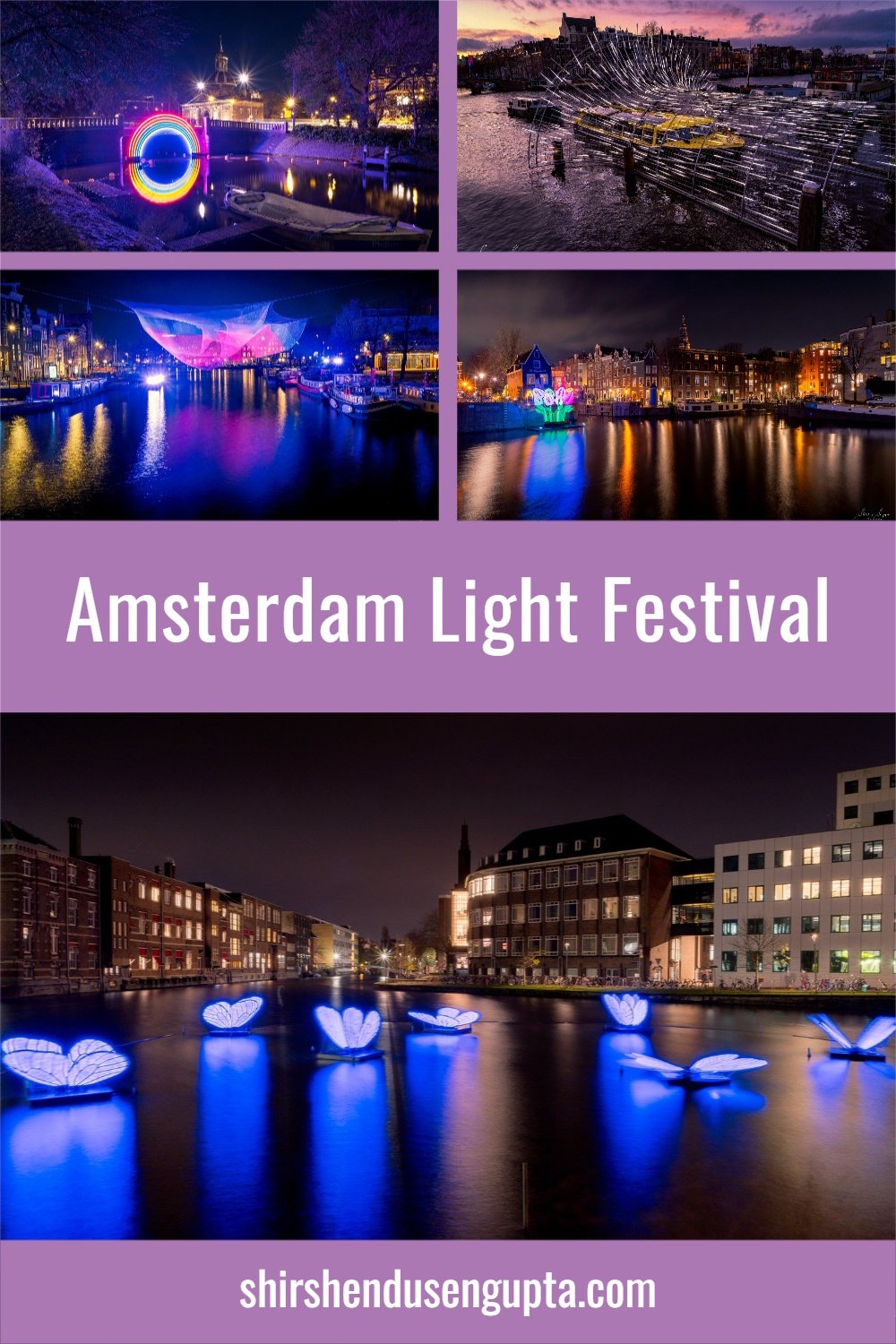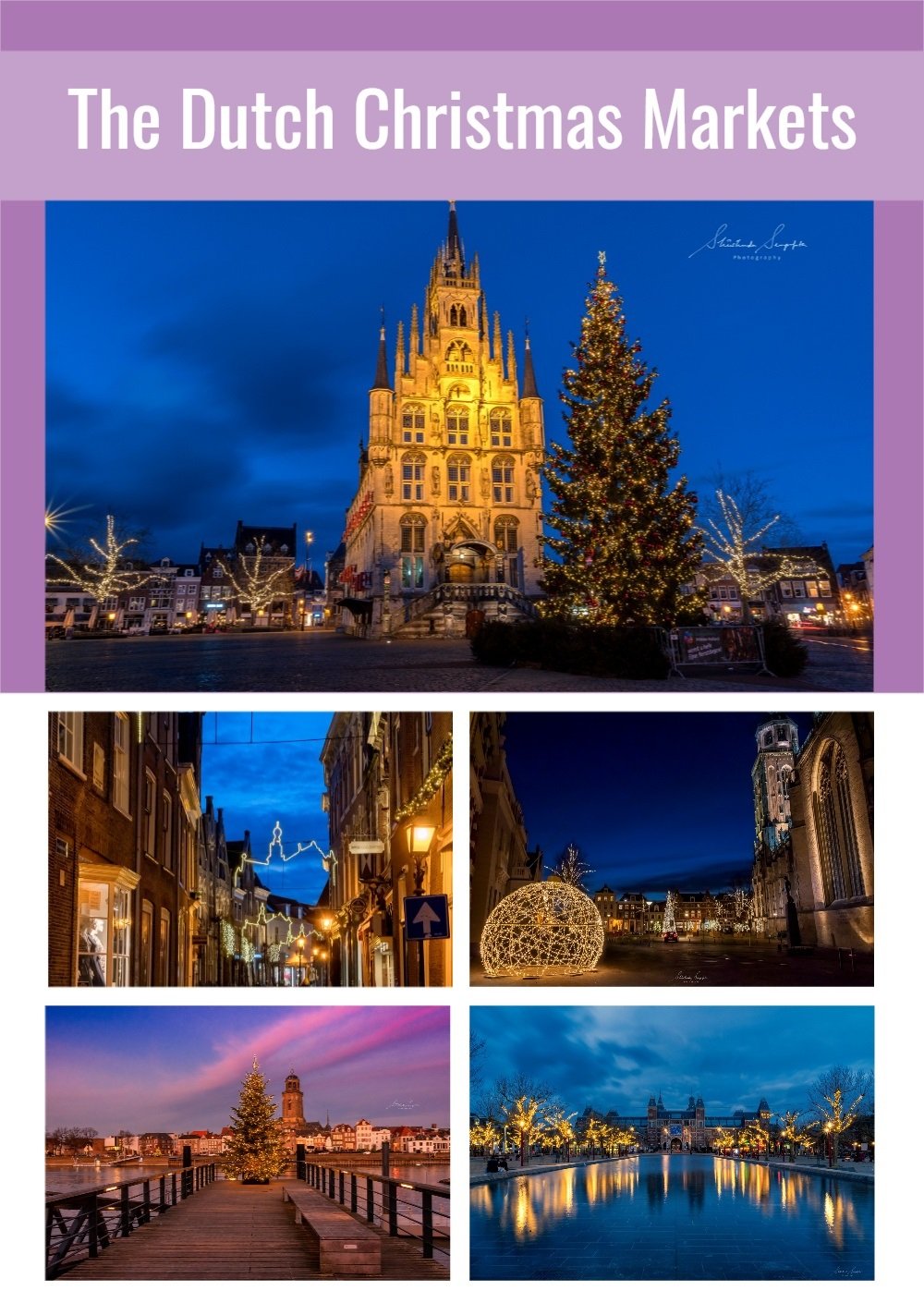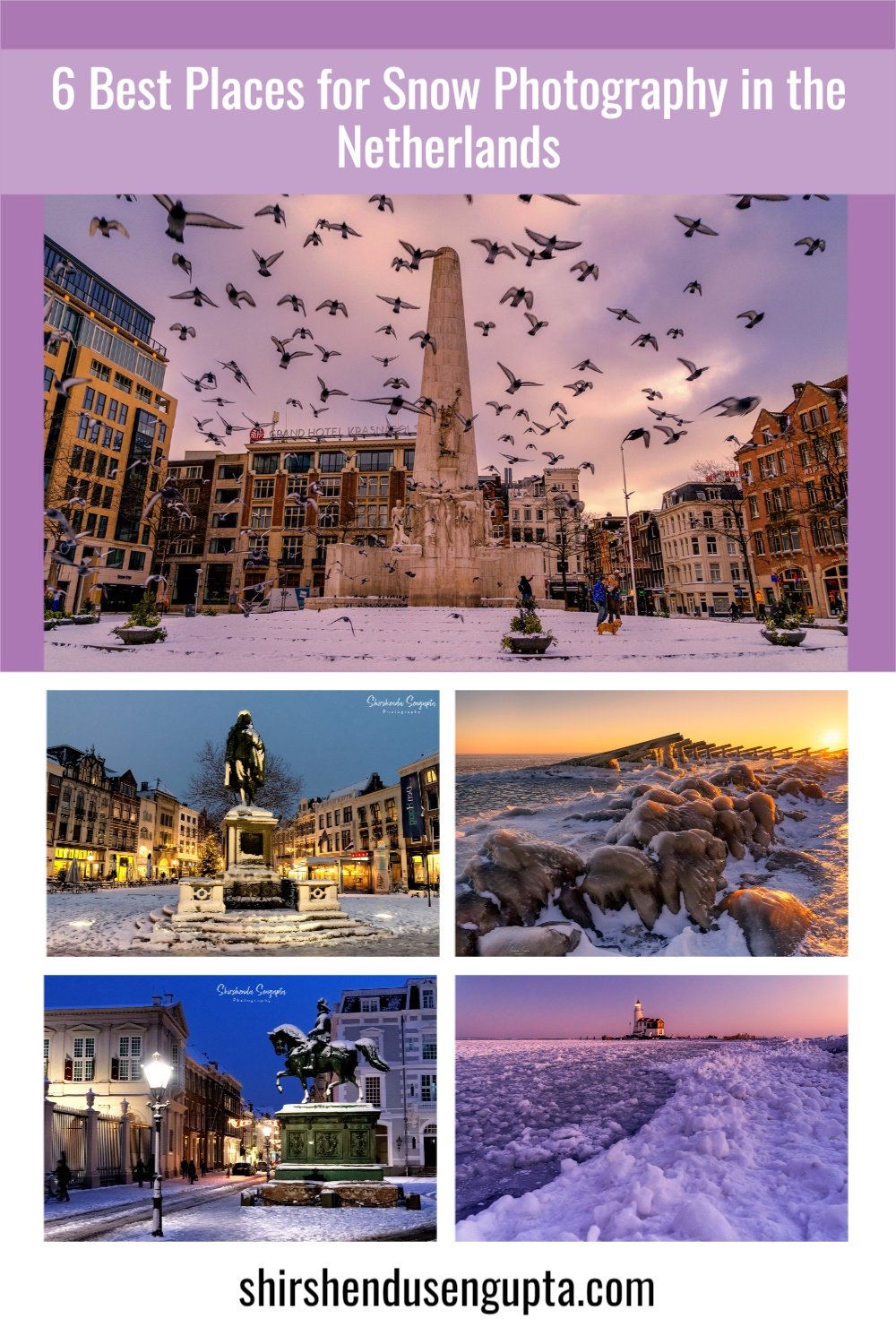The Dutch Christmas Markets 2025-2026 | 9 Best Places to Visit during Christmas 2025-2026 in the Netherlands | Top 9 Things to See and Do in the Netherlands during Christmas 2025-2026
The Complex Dutch Christmas Celebration
While the whole world is already busy shopping in Advent Markets from mid-November, the Dutch have yet to set up a Christmas Tree! Strange but true, the country starts brimming with Christmas joy only from the second week of December when the town squares convert into grand markets selling food, trinkets, glühwein, oliebollen, and all kinds of gifts that bring smiles to the faces of your friends, family, and folks you care about.
Honestly, Christmas traditions in the Netherlands are unique and a tad complex than the rest of the world. After shifting to the Netherlands, it took me quite some time to get acquainted with the sequence of events that transpires during the Advent season. So, before we get into the best places to enjoy the Christmas 2025-2026 celebrations in the Netherlands, let’s first understand the Dutch Christmas festivities.
The Dutch Christmas Festivities
1. Sint Maarten’s Dag (St. Martin’s Day) or Dutch Halloween celebrated on 11th November
The Advent season in the Netherlands starts with Sint Maarten (St. Martin) festival. Legend has it that Saint Martin of Tours (modern-day France), a Gaulish bishop, once came across a barely clad beggar as he approached the city gates of Amiens while serving in the Roman army. At once, Saint Martin cut his military cloak in half (as the other half belonged to the Roman empire) and shared it with him. That night, he had a dream of Jesus wearing the half-cloak he had given away, telling the angels, “Martin, who is still a catechumen, dressed me in this robe.” From that day onwards he came to be known as the ‘Patron Saint of the Poor.’
Today, on Sint Maarten’s Night, children go door to door together, holding their own handcrafted lanterns and singing Sint Maarten's songs to commemorate his kindness, expecting chocolates or candies in return. Since this tradition closely resembles the Halloween tradition of ‘Trick-or-Treat’, it is sometimes referred to as the Dutch Halloween, though it is nowhere closely related to it.
2. The arrival of Sinterklaas on the first Saturday after Sint Maarten
Another well-known Saint, Nicholas (better known as Sinterklaas, the source of Santa Claus of the West), arrives in the Netherlands on the first Saturday after Sint Maarten on a riverboat from ‘Spain’ laden with gifts and mandarins. He then exchanges his boat for his white horse Ozosnel (previously Amerigo) and parades through the streets with the Zwarte Pieten (literally “Black Peters”), his merry band of helpers who throw cookies and candies to the crowds.
According to legend, St. Nicholas, Bishop of Myra (modern-day Kale or Demre in Turkey), was a generous man who loved children. No one knows why he opted to reside in Spain after that, but historians point to Spain’s past dominance over the Netherlands. The skin tone of Zwarte Pieten, which is created by applying black makeup to white persons, has long been seen as a symbol of racism and slavery in the Netherlands, and has been the center of controversy and political debates.
It is interesting to note that though the Western legend of Santa Claus has been derived from the Dutch Sinterklaas, they have several differences. While both Sinterklaas and Santa Claus have white hair and a lengthy beard, Sinterklaas wears long red robes, a miter hat, and dresses like a Catholic bishop. Sinterklaas rides a white horse named Ozosnel (previously Amerigo) instead of a sleigh drawn by a team of reindeer commanded by Rudolph. Sinterklaas features assistants named Zwarte Piet instead of elves who dress up in 16th-century garb with a huge ruffled collar.
3. The Sinterklaas Evening (Sinterklaasavond) or Pakjesavond (Evening of Presents) celebrated on 5th December
Three weeks after the arrival of Sinterklaas in the Netherlands comes 5th December, the day of presents (contrary to the classical tradition where Santa Claus delivers gifts on Christmas eve). Children are told that the Piets have a large book to keep track of everything they did in the previous year. Sinterklaas will bring gifts to good children, but the Piets will put bad children in sacks and send them to Spain for a year to teach them how to behave!
On the evening of Sinterklaas’ arrival in The Netherlands, children set a shoe by the fireplace with hay and carrots for Sinterklaas’ horse, or on a windowsill, and sing Sinterklaas songs. They hope that Sinterklaas will arrive with gifts during the night. They’re taught that Sinterklaas rides his white horse Ozosnel on the roofs throughout the night and that a Piet will then climb down the chimney (or through a window) and place the presents and/or candies in their shoes.
4. Sinterklaas Dag (Sinterklaas Day) celebrated on 6th December
The next day, 6th December is celebrated as Sinterklaas’ Feast Day to commemorate his death day (or birthday in heaven).
5. Christmas preparations start after Sinterklaas Dag
It is important to note that setting up Christmas Trees or decors is taboo until Sinterklaas is over in the Netherlands. So all Christmas decorations start only after 6th December.
6. Kerstdagen (Christmas Days) celebrated on 25th and 26th December, and the arrival of Kerstman (Father Christmas), the Dutch equivalent of Santa Claus
The Dutch celebrate Christmas over two days 25th and 26th December (First and Second Christmas Day), contrary to the West where 26th December is celebrated as Boxing Day, by spending time with family, singing carols, playing games, watching movies, reading Christmas tales, and indulging in holiday feasts consisting of oliebollen (an oily doughnut), Christmas stollen (round bread with currents and raisins), almond pastry rings, enough marzipan to last until next Christmas, and chocolate Christmas rings. Christmas dinner in the Netherlands typically include venison, geese, hare, or turkey, as well as plenty of vegetables and Kerstbrood (Christmas bread). Gourmetten, a hot plate on which guests place a collection of tiny pans holding their choice of meat or veggies, is another way the Dutch celebrate. Dessert usually consists of pudding, followed by a cup of warm chocolate with whipped cream.
On Christmas eve, Dutch children believe that Kerstman (Father Christmas), the Dutch equivalent of Santa Claus arrives from Lapland, Finland, bringing additional gifts. So yes, Sinterklaas and Santa Claus both coexist peacefully in this free country called the Netherlands!
9 Best Places to Visit during Christmas 2025-2026 in the Netherlands
So now that we’ve got the Dutch Christmas traditions clear, it’s time to find out where to enjoy the Christmas festivities in the Netherlands.
1. Christmas Town Valkenburg - Gemeentegrot (Municipal Cave), Fluweelengrot (Velvet Cave), Wilhelmina Cave (Winter Wonderland), and MergelRijk's Christmas show
The Christmas Market in Valkenburg is hands down the best in the Netherlands. Having seen a lot of Christmas Markets around the globe, I can safely proclaim that it is one of the most unique Christmas Markets on the planet. It's not every day that you get to visit a cave with Christmas Markets! During the Christmas season, Valkenburg inhabitants transform the city's amazing caves into stunning Christmas Markets. More than 50 stores inside the Velvet and Municipal Caves sell Christmas decorations and presents. The caves' darkest corners are illuminated by bright lights and Christmas trees with lovely ornaments.
Along with that, in most places, there is only a Christmas market, but in Valkenburg, the entire city is engulfed in a Christmassy ambiance giving it the name of ‘Kerststad’ or ‘The Christmas Town.’ A dazzling Xmas parade with gorgeous music, costumes, and various dance movements, a little Christmas world, an unexpectedly magnificent light exposition in the Roman catacombs, and, of course, a lot of fun. Kerststad (Christmas Town) Valkenburg won the title of 'European City of Christmas' in 2018, and in 2020 it ranked 9th in the 'European Best Christmas Market 2020' competition, beating out places like Trier, Prague, Amiens, and Cologne. But though the whole city transforms into a 'Christmas Village,' there are four Christmas Caves that are a must-visit for all travelers.
Gemeentegrot (Municipal Cave) - This is Europe's largest underground Christmas market, with innumerable Christmas items for sale. However, the caves' magnificent structures have made the event so popular, not the souvenirs. Visit more than fifty stalls within the labyrinth decked with countless Christmas trees and Christmassy decorations while roaming through the Gemeentegrot Christmas Market. You can easily spend hours exploring the caves' nooks and crannies while shopping for winter apparel and accessories, jewelry, antiques, desserts, cooking utensils, hand-blown glass ornaments, and Belgian chocolates. You can also buy food and drinks to eat, such as the decadent Grotbol and Gluhwein (mulled wine), as well as Chocomel (chocolate milk).
Fluweelengrot (Velvet Cave) - Underneath Valkenburg's destroyed castle, centuries-old passages wind their way through the golden marlstone. The Christmas Market, which distributes its stalls throughout the caves every year, adds to the allure of a visit to the Velvet Cave (Fluweelengrot).
Wilhelmina Cave (Winter Wonderland) - Take a thrilling journey of Nativity of Christ from Nazareth to Bethlehem. A trip on the cable-lift to visit the Wilhelminatoren, Limburg's ‘Biggest illuminated Christmas tree,’ is the ideal follow-up activity to this experience.
MergelRijk's Christmas Show - Dubbed as the 'The Valkenburg Christmas Cave,' here the Biblical Christmas tale is depicted in a 30-meter long diorama of miniatures. Allow yourself to be taken away by the several Christmas villages with thousands of residents set in winter landscapes, and marvel at the magnificent marl sculptures.
To know more about the Christmas Markets in Valkenburg, please read our article Valkenburg Christmas Market 2025-2026 | Kerststad Valkenburg 2025-2026 | Christmas Town Valkenburg 2025-2026 | The Unique Christmas Cave Markets of Valkenburg, the Netherlands.
Practical Information
Dates: 14 November 2025 - 4 January 2026
Entry Fee: Around €10 per cave (combo tickets available)
2. Amsterdam - Dam Square, Museumplein (Ice Village), and RAI (Winter Paradise)
Amsterdam is incredibly stunning at this time of year. The city is transformed into a fairytale by Christmas trees, decorations, and multicolored lights, which are coupled with the gorgeous canals. The largest Christmas Tree in Amsterdam, measuring up to 20 meters (65 feet) in height and adorned with over 40,000 lights, is found at Dam Square, the city’s center, set against the Royal Palace. The tree is traditionally lit in mid-December at a tree lighting ceremony that includes carol singers and merchants selling traditional Dutch Christmas dishes like poffertjes and oliebollen. The other big Christmas Market is the ‘Ice Village’ at Museumplein, which has classic holiday chalets, fire pits, mulled wine cauldrons, and an ice skating rink set up against the stunning Rijksmuseum as the backdrop. Meanwhile, the Amsterdam ‘Winter Paradise’ at the RAI Convention Centre offers a full indoor and outdoor winter experience with rides, skiing, live music, and cozy food stalls, perfect for families and visitors seeking festive fun in all weather.
Practical Information
Dates:
Museumplein Christmas Market (Ice Village): 4 - 28 December 2025
Amsterdam Winter Paradise (RAI): 17 December 2025 - 3 January 2026
Entry Fee: Free entry to the Christmas market; ice skating €14.50 (includes skate rental)
3. Royal Christmas Fair Den Haag - Plein and Lange Voorhout
The Royal Christmas Fair in Den Haag (The Hague) is one of the largest Christmas markets in the Netherlands, taking place in the city center. The massive Christmas Trees in the Plein, in front of the Mauritshuis Museum, which houses Vermeer’s painting ‘The Girl with a Pearl Earring,’ and the Passage Shopping Mall, as well as the Christmas decors and carols at the romantic Lange Voorhout, are sure to put you in the Christmas spirit. You'll find present ideas, wintery apparel, and design decorations among the approximately 100 stalls. You can also enjoy a program of children’s choirs, theatrical groups, and storytellers, as well as mulled wine, winter coats, Christmas lights, wood carvings, candles, and all kinds of Christmas gifts.
Practical Information
Dates: 4 - 23 December 2025
Entry Fee: Free
4. Gouda by Candlelight - Markt
Gouda by Candlelight, also known as Gouda by Kaarslicht or Kaarsjesavond (Candle Night), is a well-known yearly Christmas festival in Gouda, in the western Netherlands. Countless lit candles, singing, and festivities are all part of this ritual. Every year, thousands of people come to Gouda by Candlelight, including prominent national and international visitors. The event takes place in front of the Gothic town hall in the central market square (Markt). Street and electric lights are turned off, and candles are placed in windows facing and around the area to light the evening. To create a really magical experience, the Mayor gives a speech and lights a huge Christmas tree studded with thousands of light bulbs. The Christmas tree is a gift from Kongsberg, its Norwegian sister city.
Practical Information
Dates: 12 December 2025
Entry Fee: Free
5. Christmas Market and Dickens Festival Deventer - De Worp Pier, Grote Kerkhof, and Brink (Main Square)
During the 14th and 15th centuries, Deventer was one of seven Dutch cities along the IJssel River that constituted the Hanseatic League, a trade association. Because of the great prosperity and wealth that resulted from this union, it's no surprise that these cities are still stunning. One of the reasons Deventer is so lovely during Christmas is that so many original buildings remain in the historic neighborhood, allowing the Christmas decorations like the authentic Christmas Tree set up on the De Worp Pier by the IJssel with the stunning Deventer skyline as the backdrop, the tall Christmas Tree put up in front of the Lebuinukerk (Lebuinus Church), giant animals and figurines made from lights, and other Christmas decors all around the cozy shopping streets up to the central square of Brink, to blend in seamlessly, thereby creating a romantic ambiance.
The other attraction Deventer is known for is the Charles Dickens Festival. Every year, the week before Christmas, the city transforms into a magical Victorian-era English world of Charles Dickens where more than 950 characters from the pages of his famous books spring to life amidst a backdrop of exquisitely restored 19th-century buildings decorated with house-sized Christmas trees and thousands of lights!
To know more about the Charles Dickens Festival Deventer and how to visit it, please read our article Dickens Festijn Deventer 2025 | World’s Largest Charles Dickens Festival in Deventer, Netherlands 2025 | Walking Route Map, Practical Information, Tips and Tricks.
Practical Information
Dates: 13 - 14 December 2025
Entry Fee: Free (some special exhibits may charge around €6)
6. Haarlem - Grote Markt
Haarlem's market squares and streets morph into one of the largest Christmas Market festivals in the world in mid-December. The market stalls are set up near a massive Christmas Tree in the Grote Markt. Over 300 stalls sell cheeses, meats, herbs, and vegetables, flowers (of course! ), fries, herring, homemade handicrafts, mulled wine cups, cinnamon-flavored stroopwafels, and Christmas Tree-shaped sweets. Aside from the markets, taking a stroll around the old town's small meandering cobblestone streets to see the lights and decorations is also a great way to soak in the festive ambiance.
Practical Information
Dates: 12 - 14 December 2025
Entry Fee: Free
7. Groningen - Grote Markt and WinterWelVaart
Groningen turns glittering during the month of December. Right from the central Vismarkt (Fish Market) up to the Martinikerk (St. Martin’s Church), via the Grote Markt (Big Market), it is stalls, food, music, and lights everywhere. And if you want an unconventional Christmas experience, you can head to WinterWelVaart, which’s a canal lined with moored historical ships that were built to cruise the canals as cargo ships, but have subsequently been converted to various usage.
Practical Information
Dates: 27 November 2025 - 4 January 2026
Entry Fee: Free
8. Delft - Markt
Every year the Delft Christmas Market (Kerstmarkt) is held along the canals and at Market square (Markt) in the city center, between the 17th-century town hall (Stadhuis) and the Nieuw Kerk (New Church) from the second week of December up to the Christmas Day. Wooden chalet-style stalls sell everything you need for the holidays, including decorations, food, and gifts, and carolers, choirs, and a band performs for the occasion.
Practical Information
Dates: Mid - Late December 2025
Entry Fee: Free
9. Maastricht - De Vrijthof
Maastricht is a great city all year with exactly the right ambiance for epicureans, but from the end of November to the New Year, the city takes on an extra mesmerizing edge when the Christmas Market is held at Vrijthof square. The city goes all out for Christmas under the moniker ‘Magical Maastricht,’ so go to the Christmas market to find all your Christmas gifts, eat bratwurst and glühwein, go ice skating on Vrijthof square, see the sea of lights from the top of the Ferris wheel, and then continue shopping in the lovely Jekerkwartier area.
Practical Information
Dates: 29 November - 30 December 2025
Entry Fee: Free
Visiting the Netherlands
Best Time to Visit: The best seasons to travel to the Netherlands are spring (April to May) when tulips are in full bloom and early fall (September to October) when beautiful fall colors are everywhere. The weather is mild and pleasant during these times, and the crowds are generally smaller compared to the peak summer season (June to August).
Number of Days to Stay: Seven to ten days are perfect for touring the Netherlands. This allows you to visit major cities like Amsterdam, Rotterdam, and The Hague, as well as explore smaller towns and attractions such as Utrecht, Haarlem, Maastricht, and the tulip fields. It also gives you time to experience the Dutch countryside and iconic windmills.
Best Place to Stay: Amsterdam, the capital of the Netherlands, is a great place to start your Dutch exploration. It has a large selection of accommodation options, ranging from high-end hotels to inexpensive hostels. Major attractions in the city include the Rijksmuseum, the Anne Frank House, and the Van Gogh Museum. For those seeking a more contemporary urban experience, Rotterdam is a fantastic choice because of its modern architecture and vibrant cultural scene. Additionally, it is a significant transportation hub that facilitates travel around the country. Den Haag (The Hague) which is the seat of the Dutch government and the International Court of Justice, is home to many historical landmarks, museums, and beaches. For those who like to avoid the bustle of the bigger cities, Utrecht is a wonderful option because of its convenient central location and quaint medieval old town. It has excellent train connections to various regions of the nation.
Best Way to Arrive: Amsterdam Airport Schiphol, one of Europe's busiest airports, serves as the primary international entry point into the Netherlands. It is connected to numerous international destinations. The Netherlands has excellent train connections to its surrounding nations. Amsterdam is connected to cities like Brussels, Paris, London, and Berlin via international trains like Thalys, Eurostar, and ICE. Numerous international bus companies, including FlixBus, run services from different European cities to the Netherlands. You can also drive to the Netherlands by car, especially if you want to explore the surrounding regions. There is a vast road network throughout the nation, and airports and major cities offer car rental services.
Best Local Mode of Conveyance: The Netherlands has a first-grade public transportation system consisting of buses, trains, trams, metros, and ferries. A contactless smart card called the OV-chipkaart is used to board all public transportation. Nederlandse Spoorwegen (NS) runs the trains, which are the most convenient means of transportation between cities. In addition to ridesharing services like Uber, taxis are accessible in all major cities. The Netherlands is well-known for its cycling culture, featuring bike-friendly infrastructure and designated bike lanes all around the nation. Cities in the Netherlands are very walkable, especially the central areas of Amsterdam, Utrecht, and The Hague. In cities like Amsterdam, canal boats are a popular way to see the city from a different perspective. Various companies offer canal cruises and water taxis.
Epilogue
So that brings us to the end of our journey across the 9 best places to visit in the Netherlands during Christmas 2025-2026. Please let us know in the comments below if you enjoyed reading this article.
And if you are interested in visiting other festivals in the Netherlands, please read our article Netherlands Festival Calendar Winter 2025 - Autumn 2026 | Upcoming Annual Events and Festivals in the Netherlands. Until then, I wish you merry traveling and happy shooting!
Pin the article
Bookmark the article for reading later!
Want to license/buy photos in the article?
License photos for commercial/editorial use or buy photo prints!
Want us to write an article for you?
Articles for magazines, newspapers, and websites!
Watch our Videos
Check out our videos on our Youtube Channel!
Join the Newsletter
Get updates on our latest articles!
We respect your privacy. Read our policy here.



